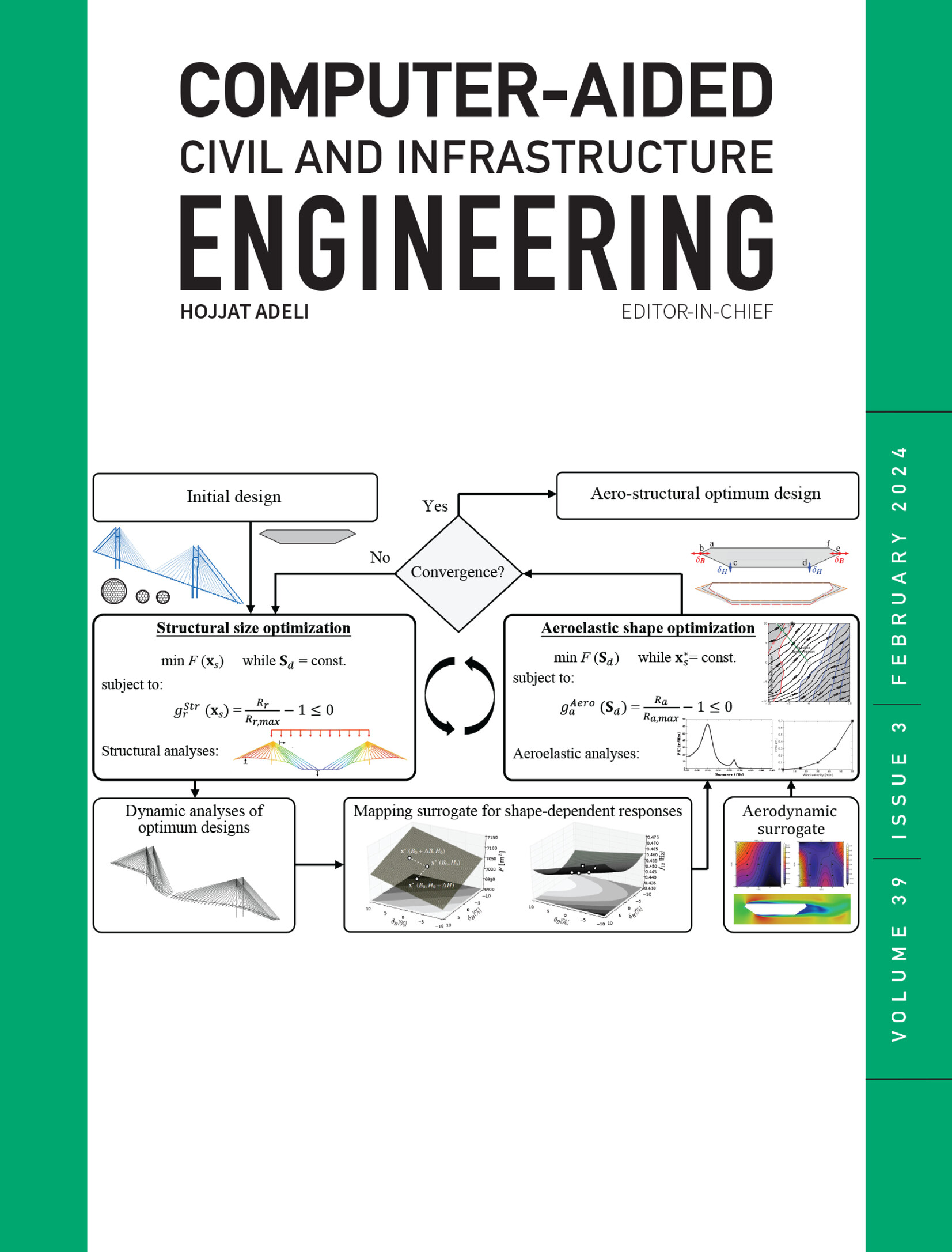Multi‐objective optimization of nonlinear passive control systems for seismic response mitigation of bridges
IF 9.1
1区 工程技术
Q1 COMPUTER SCIENCE, INTERDISCIPLINARY APPLICATIONS
引用次数: 0
Abstract
A substantial number of existing bridges in high‐seismicity countries like Italy were not designed for seismic actions, thus being particularly vulnerable to earthquake‐induced motions. While deck isolation from piers is commonly employed to reduce base shear and seismic vibrations, it often fails to keep deck displacements within acceptable limits, thus preventing a large‐scale application of this technology. Damping levels higher than those provided by common isolation devices require nonlinear analysis methods, including unconventional hysteresis models. Aiming at improving the seismic response of bridges, this study proposes a unified optimal design strategy for bridges adopting generalized non‐linear rate‐dependent (RD) and rate‐independent (RI) control systems based on Seleemah–Constantinou and Vaiana–Rosati models, respectively. The resulting generalized nonlinear control systems are then optimized using a meta‐heuristic algorithm by simultaneously considering multiple competing objectives to mitigate bridge deck displacement, acceleration, and transmitted force to the pier. The RD and RI control systems tend to yield a displacement‐constrained and an acceleration‐constrained design objective, respectively. In both cases, the optimal Pareto front shows a significant improvement over the base‐isolated response in terms of isolator displacement with further reduction or minimal increase in the force transmitted to the pier. The results of this study contribute to the development of an effective seismic mitigation strategy for bridges where both base shear and deck displacement provide major constraints.桥梁地震反应非线性被动控制系统的多目标优化
在像意大利这样的高地震活动国家,大量现有的桥梁并不是为地震活动而设计的,因此特别容易受到地震引起的运动的影响。虽然桥墩与桥面隔离通常用于减少基底剪切和地震振动,但它通常无法将桥面位移保持在可接受的范围内,从而阻碍了该技术的大规模应用。比普通隔离装置提供的更高的阻尼级别需要非线性分析方法,包括非常规的滞后模型。为了提高桥梁的地震反应,本研究提出了一种统一的桥梁优化设计策略,分别采用基于Seleemah-Constantinou和Vaiana-Rosati模型的广义非线性速率相关(RD)和速率无关(RI)控制系统。由此产生的广义非线性控制系统然后使用元启发式算法进行优化,同时考虑多个相互竞争的目标,以减轻桥面位移,加速度和传递到桥墩的力。RD和RI控制系统分别倾向于产生位移约束和加速度约束的设计目标。在这两种情况下,最优的帕累托前沿在隔振器位移方面比基础隔振响应有了显著改善,传递到桥墩的力进一步减少或最小增加。本研究的结果有助于制定有效的桥梁抗震策略,其中基础剪力和桥面位移是主要的限制因素。
本文章由计算机程序翻译,如有差异,请以英文原文为准。
求助全文
约1分钟内获得全文
求助全文
来源期刊
CiteScore
17.60
自引率
19.80%
发文量
146
审稿时长
1 months
期刊介绍:
Computer-Aided Civil and Infrastructure Engineering stands as a scholarly, peer-reviewed archival journal, serving as a vital link between advancements in computer technology and civil and infrastructure engineering. The journal serves as a distinctive platform for the publication of original articles, spotlighting novel computational techniques and inventive applications of computers. Specifically, it concentrates on recent progress in computer and information technologies, fostering the development and application of emerging computing paradigms.
Encompassing a broad scope, the journal addresses bridge, construction, environmental, highway, geotechnical, structural, transportation, and water resources engineering. It extends its reach to the management of infrastructure systems, covering domains such as highways, bridges, pavements, airports, and utilities. The journal delves into areas like artificial intelligence, cognitive modeling, concurrent engineering, database management, distributed computing, evolutionary computing, fuzzy logic, genetic algorithms, geometric modeling, internet-based technologies, knowledge discovery and engineering, machine learning, mobile computing, multimedia technologies, networking, neural network computing, optimization and search, parallel processing, robotics, smart structures, software engineering, virtual reality, and visualization techniques.

 求助内容:
求助内容: 应助结果提醒方式:
应助结果提醒方式:


